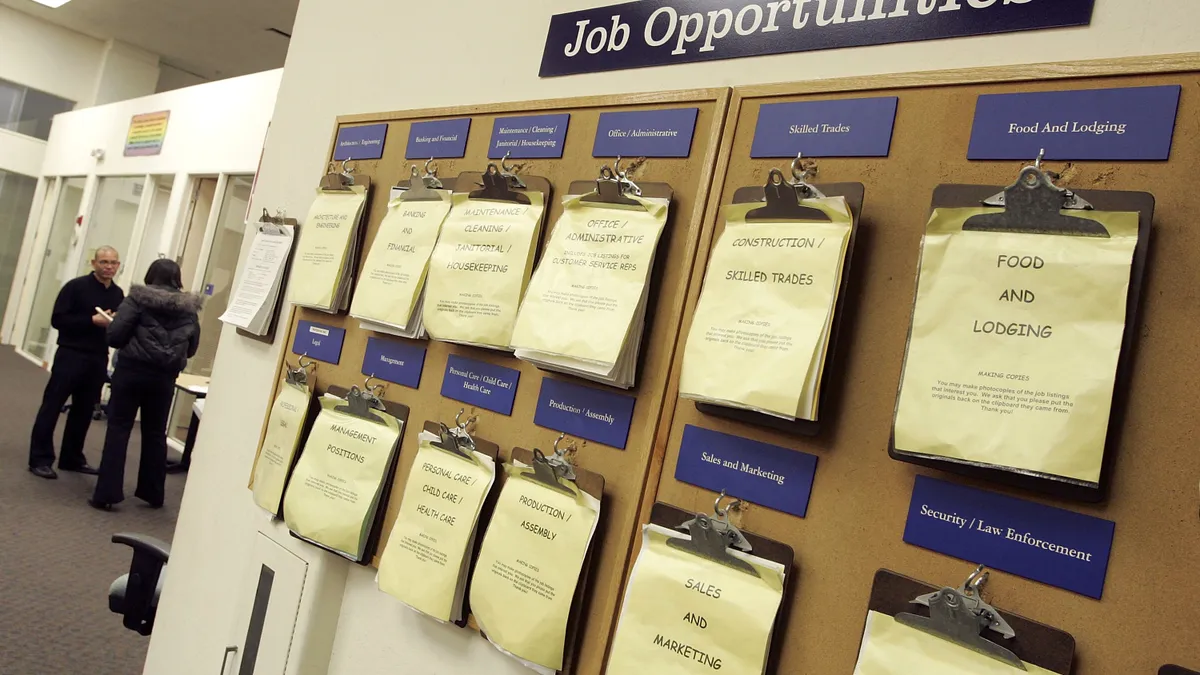Dive Brief:
- The U.S. recorded 8.1 million job openings in March, the highest such mark since the U.S. Bureau of Labor Statistics began its series tracking the statistics in 2000, the agency announced May 11.
- That mark surpasses the pre-pandemic high of more than 7.5 million openings set in November 2018. BLS said the largest increases occurred in accommodation and food services, followed by the state and local government education sector and the arts, entertainment and recreation sector.
- At the same time, layoffs and discharges continued a downward trend, declining to a series low, BLS said. The agency also noted that the U.S. recorded a net employment gain of 3.3 million workers in March.
Dive Insight:
The nation's job market is experiencing a slow, gradual recovery from the early months of the coronavirus pandemic. BLS' monthly jobs report showed that the U.S. unemployment rate hit 6.1% in April, adding 266,000 jobs. Observers have pinpointed a number of barriers to speedier recovery, including a lack of access to childcare that would enable some to re-enter the workforce.
At the same time, many of those who suffered prolonged unemployment or underemployment "are going back to work," David M. Smith, professor of economics and associate provost for online learning at Pepperdine University's Graziadio Business School, told HR Dive in an email. Much of the recent job growth has also occurred in low-wage positions, he added.
"Some employers may be looking for workers with specific skills but are unable to find them," Smith said, pointing to the example of the construction industry, where employers are facing shortages of framers, plumbers and electricians. "Corporations are going to have to invest more in reskilling the workforce to take advantage of opportunities offered from automation."
Commentators have debated the role that unemployment benefits have played in labor shortages in industries such as leisure and hospitality. Researchers from the left-leaning Economic Policy Institute stated in a May 11 article that economic signs unemployment insurance benefits have driven higher wages in such industries "are far too faint to justify a scaling back of these benefits or to justify state-level policymakers depriving their own workers of a needed boost to the safety net."
Smith said that, while pandemic-related unemployment benefits and online schooling may be related to existing labor shortages, "these should be temporary restraints as enhancements to weekly jobless benefits and an 18-month extension of payments for some workers expire in early September."













